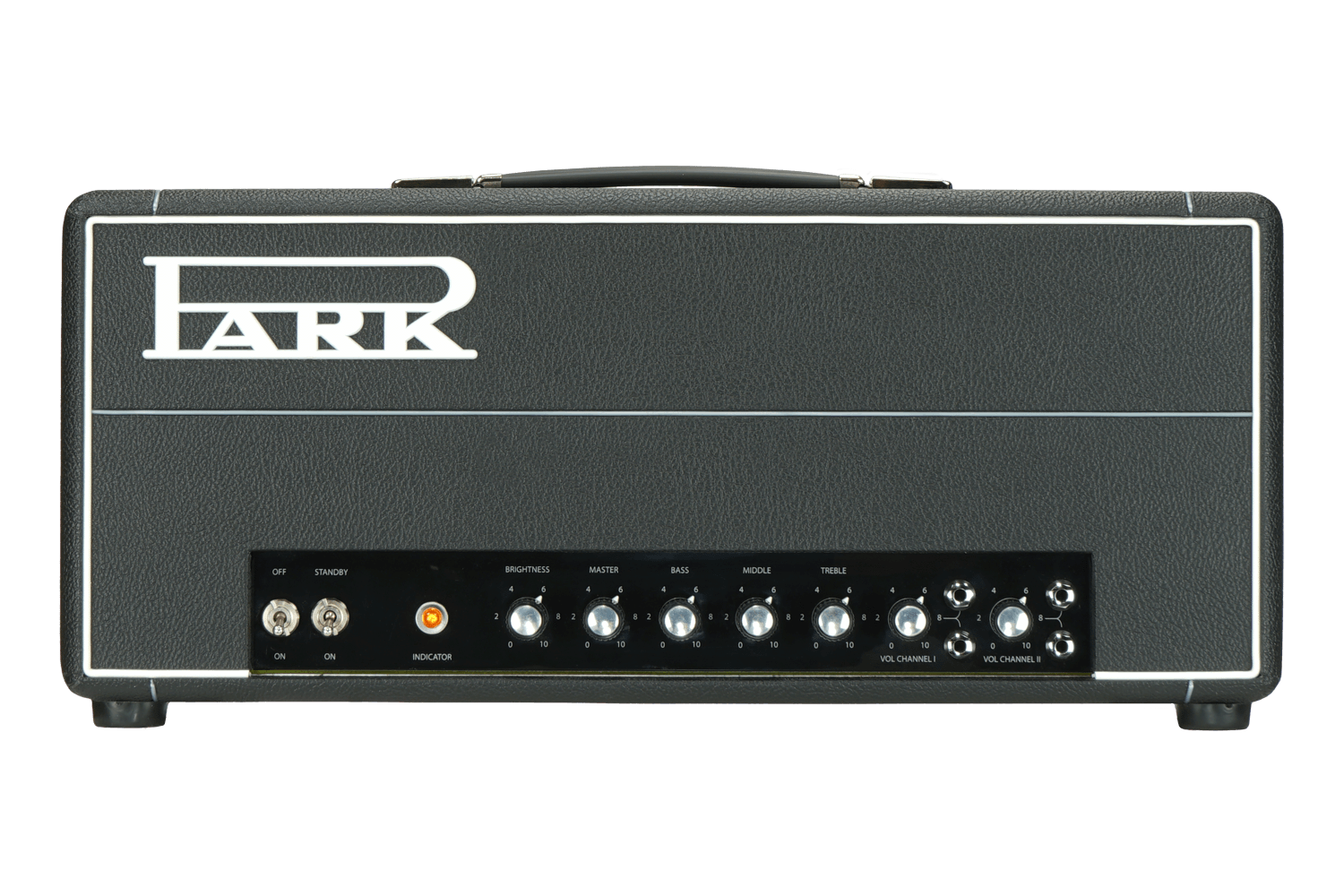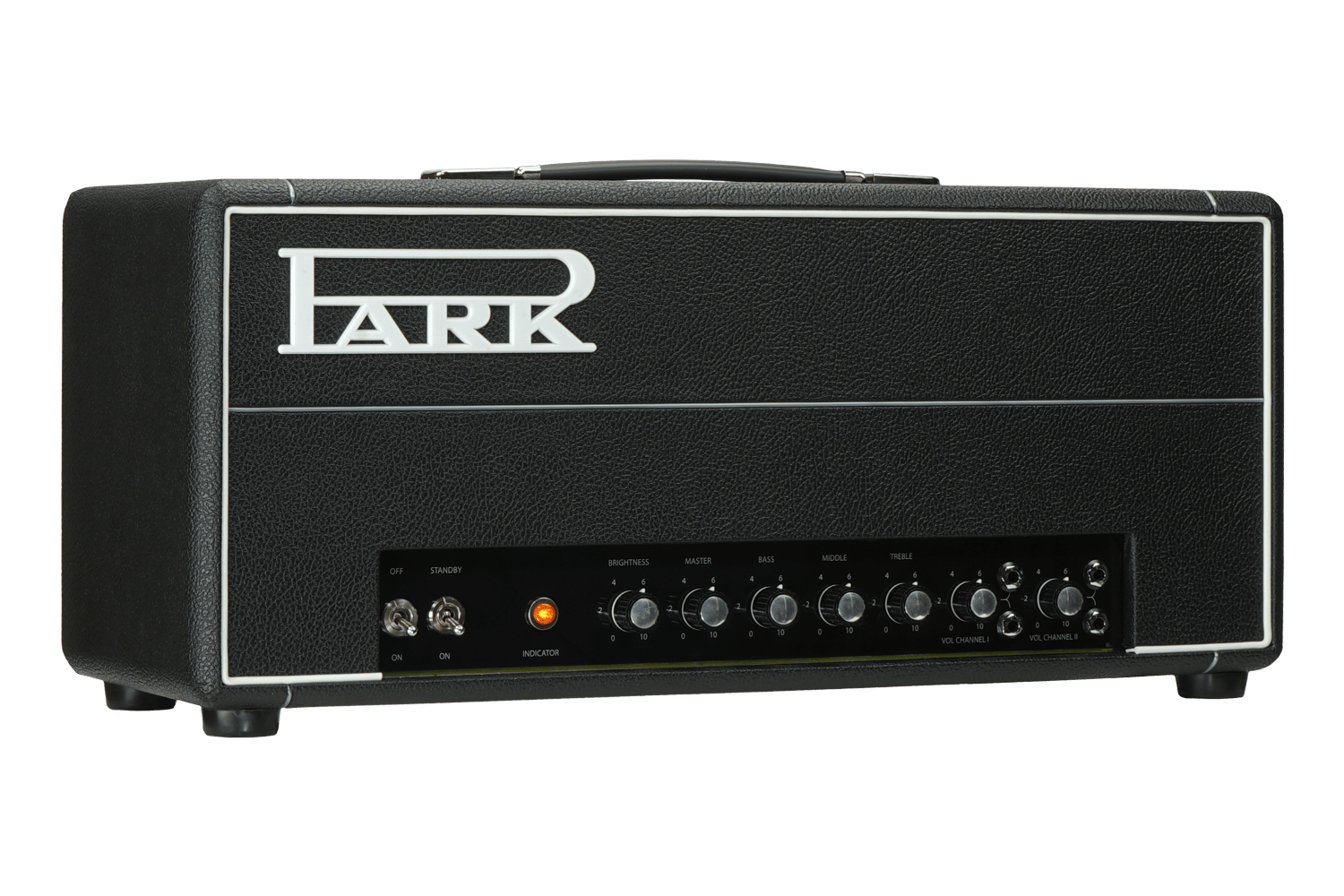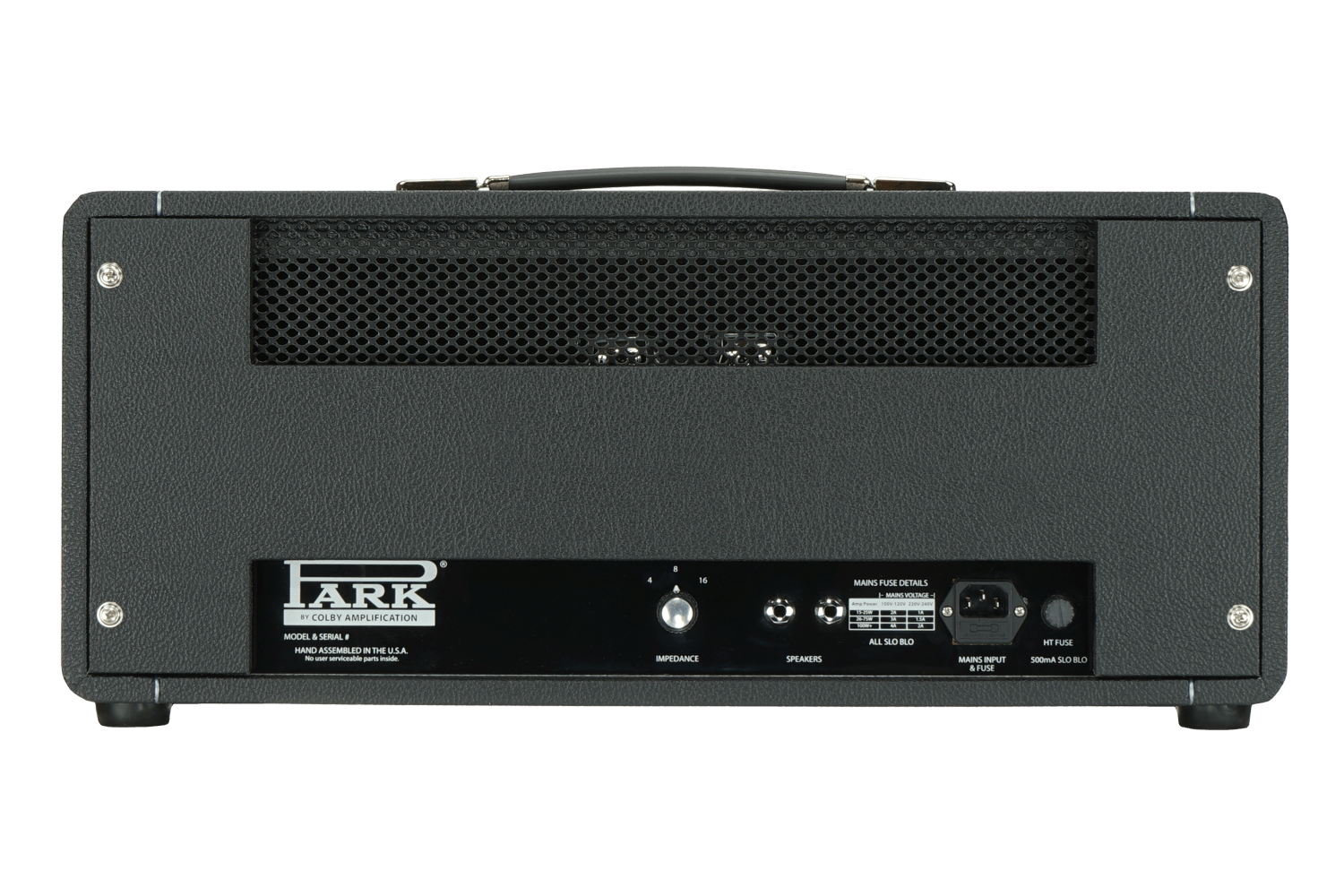
 HANDWIRED
HANDWIRED
P75 Classic (1969)
75-Watt Park w/ KT88s
Contact Us for AvailabilityWhen the situation calls for a classic and you are tonally craving ‘more of everything Jim Marshall’ the Park P75 is the obvious choice. InspiRed by the original Fender Tweed Bassman circuit (as were the early Park 45’s and 50’s) - the Park 75 pushes this format to the limit providing 50 watts clean and 90 watt’s fully cranked.
PoweRed by KT 88 tubes - the P75 is the most powerful of the Park ‘Plexi’ Amplifiers. Offering unique ‘full tone’ plus increased bottom end response, the Park 75 has become known for its versatility. A favorite for pedals. The power section sports a pair of KT88 tubes that give the Park P75 a ‘detailed and robust sound that is still tight and percussive’.The 4 inputs into 2 channels allows for individual and blended use of the channels. Standard PPIMV (Post Phase Inverter Master Volume) ensures that the Park P75 amplifier is producing a full sound even if the Master Volume control is pulled back.
PoweRed by KT 88 tubes - the P75 is the most powerful of the Park ‘Plexi’ Amplifiers. Offering unique ‘full tone’ plus increased bottom end response, the Park 75 has become known for its versatility. A favorite for pedals. The power section sports a pair of KT88 tubes that give the Park P75 a ‘detailed and robust sound that is still tight and percussive’.The 4 inputs into 2 channels allows for individual and blended use of the channels. Standard PPIMV (Post Phase Inverter Master Volume) ensures that the Park P75 amplifier is producing a full sound even if the Master Volume control is pulled back.
FEATURE OVERVIEW
- — Most powerful of the Park ‘Plexi’ amplifiers
- — 50 watts clean, 90 watts cranked.
- — KT88 tubes offer unique ‘fuller tone’ and more power for increased bottom end response.
- — Great reviews for how it handles Pedals!
- — 2 Channel / 4 Input - allows for individual and blended use of the channels.
MITCH COLBY'S SIGNATURE MODS (NOW STANDARD)
- — Push/Pull - mid boost applied to both channels simultaneously
- — PPIMV.- Post Phase Inverter Master Volume now standard - overdrive the Park P75 at lower volume levels - or ‘crank’ the Master Volume to effectively remove from the circuit as in the original Jim Marshall P75 design.
The PPIMV is a volume control after the signal is split by the phase inverter tube and just before it goes into the power section (tubes) of the amp. Because the PPIMV comes after the phase inverter tube it benefits from a little more added ‘overdrive’ when compared to the PrePIMV.
A neat trick with the PPIMV is that by cranking it you are essentially ‘taking it out of the circuit completely’ and hearing the amp without a Master Volume which only became available in later models.
A neat trick with the PPIMV is that by cranking it you are essentially ‘taking it out of the circuit completely’ and hearing the amp without a Master Volume which only became available in later models.


Specs
output valves2 x KT88
height250mm (~10")
width600mm (~24")
depth220mm (~9")


